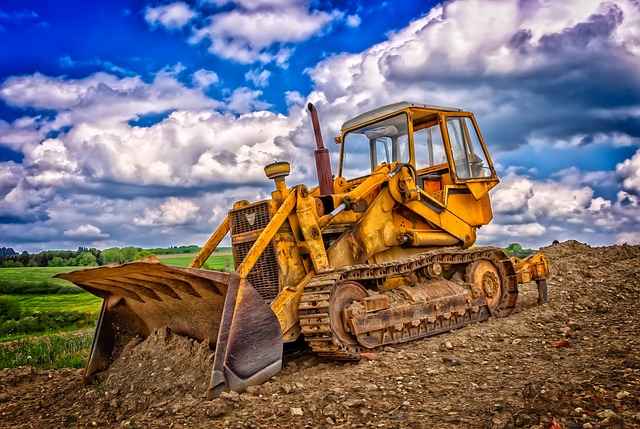
Construction methods
Published on
Average Read time: 2 minutes 14 seconds
Construction methods refer to the techniques and processes used to build structures and infrastructure. These methods vary depending on factors such as the type of project, budget, timeline, site conditions, and available materials. Here's an overview of some common construction methods:
Traditional Construction: Traditional construction methods involve building structures on-site using materials like bricks, concrete, steel, and timber. This method typically involves sequential construction processes, including excavation, foundation laying, structural framing, enclosure (walls and roof), interior finishing, and MEP (mechanical, electrical, plumbing) installations. Traditional construction is versatile and can be adapted to various types of projects, from residential homes to commercial buildings and infrastructure.
Prefabrication and Modular Construction: Prefabrication involves manufacturing building components off-site in a controlled factory environment before transporting them to the construction site for assembly. Modular construction takes prefabrication a step further by creating entire building modules or units off-site, which are then transported and assembled on-site to form the final structure. Prefabrication and modular construction methods offer advantages such as faster construction speed, reduced labor costs, improved quality control, and minimal site disruption.
Cast-in-Place Concrete Construction: Cast-in-place concrete construction involves pouring concrete into formwork on-site to create structural elements such as slabs, columns, beams, and walls. This method allows for flexibility in design and can accommodate complex shapes and configurations. Cast-in-place concrete construction is commonly used for high-rise buildings, bridges, dams, and other large-scale infrastructure projects due to its structural strength and durability.
Steel Frame Construction: Steel frame construction involves using steel columns, beams, and trusses to create the structural framework of a building. Steel frames are fabricated off-site and assembled on-site, allowing for faster construction compared to traditional methods. Steel frame construction offers advantages such as strength, durability, design flexibility, and resistance to fire and pests. It is commonly used for commercial and industrial buildings, as well as residential structures.
Timber Frame Construction: Timber frame construction utilizes wooden beams and posts to create the structural framework of a building. Timber frames are typically prefabricated off-site and assembled on-site, allowing for efficient construction and reduced labor costs. Timber frame construction is known for its sustainability, energy efficiency, and aesthetic appeal. It is commonly used for residential homes, commercial buildings, and low-rise structures.
Green Construction Methods: Green construction methods focus on reducing the environmental impact of construction projects by using sustainable materials, energy-efficient designs, and eco-friendly construction practices. Examples include passive solar design, green roofs, rainwater harvesting, recycled materials, and energy-efficient building systems. Green construction methods promote sustainability, reduce resource consumption, and minimize carbon emissions during the construction process.
Traditional Construction: Traditional construction methods involve building structures on-site using materials like bricks, concrete, steel, and timber. This method typically involves sequential construction processes, including excavation, foundation laying, structural framing, enclosure (walls and roof), interior finishing, and MEP (mechanical, electrical, plumbing) installations. Traditional construction is versatile and can be adapted to various types of projects, from residential homes to commercial buildings and infrastructure.
Prefabrication and Modular Construction: Prefabrication involves manufacturing building components off-site in a controlled factory environment before transporting them to the construction site for assembly. Modular construction takes prefabrication a step further by creating entire building modules or units off-site, which are then transported and assembled on-site to form the final structure. Prefabrication and modular construction methods offer advantages such as faster construction speed, reduced labor costs, improved quality control, and minimal site disruption.
Cast-in-Place Concrete Construction: Cast-in-place concrete construction involves pouring concrete into formwork on-site to create structural elements such as slabs, columns, beams, and walls. This method allows for flexibility in design and can accommodate complex shapes and configurations. Cast-in-place concrete construction is commonly used for high-rise buildings, bridges, dams, and other large-scale infrastructure projects due to its structural strength and durability.
Steel Frame Construction: Steel frame construction involves using steel columns, beams, and trusses to create the structural framework of a building. Steel frames are fabricated off-site and assembled on-site, allowing for faster construction compared to traditional methods. Steel frame construction offers advantages such as strength, durability, design flexibility, and resistance to fire and pests. It is commonly used for commercial and industrial buildings, as well as residential structures.
Timber Frame Construction: Timber frame construction utilizes wooden beams and posts to create the structural framework of a building. Timber frames are typically prefabricated off-site and assembled on-site, allowing for efficient construction and reduced labor costs. Timber frame construction is known for its sustainability, energy efficiency, and aesthetic appeal. It is commonly used for residential homes, commercial buildings, and low-rise structures.
Green Construction Methods: Green construction methods focus on reducing the environmental impact of construction projects by using sustainable materials, energy-efficient designs, and eco-friendly construction practices. Examples include passive solar design, green roofs, rainwater harvesting, recycled materials, and energy-efficient building systems. Green construction methods promote sustainability, reduce resource consumption, and minimize carbon emissions during the construction process.
These are just a few examples of construction methods used in the industry, and often, projects may employ a combination of methods to meet specific requirements and objectives. The choice of construction method depends on factors such as project scope, budget, timeline, environmental considerations, and client preferences.